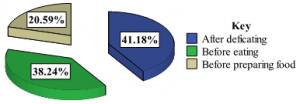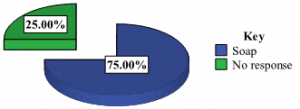This project is part of Bridge Water Project's program in Western Kenya. What follows is direct from them:
A. BACKGROUND
The proposed Mukhonje community water project is a hand dug well that was initiated by Kefinco (Kenya Finland Company) in the year 1994. Their aim of digging this well was to provide a safe and reliable water source to the members of Mukhonje community. The total depth of the well is 12.6M and the water level is 10M. The well was installed a 5’’ casing and then fitted with a Nira pump. It served the community for a long time and the water was reliable since it would withstand the dry seasons. Due to ware and tare, the pump got spoilt in the year 2003. The then water committee did the repairs but the pump was rendered useless in the year 2004 since the spare parts could not be found locally since Nira pumps were not sold locally. Since the well was not under anyone’s care, the spoilt pump was vandalized by unknown people in the year 2006. The community members started fetching water from the well using a bucket and a rope. The water became unsafe since children from the neighboring Mukhonje Primary school would throw litter in the well. The local area leadership decided to cover the well and lock it with a padlock until they found another pump. Due to the condition of their current water source, BWP has granted the communities wish for a new pump to be installed on the well.
B. CURRENT WATER SOURCE
The community members currently access water from a stream called Mutakha Tsanzu. The stream is not protected and drys up during the dry season. The turbidity of the water is 40, which is below the recommended level of WHO (World Health Organization). When the stream dries up, the community members fetch water from a hand dug well that was dug by one of the community members. This hand dug well also serves the neighboring Mukhonje Secondary School. The community fetches water from the hand dug well using a rope and a jerrican and sometimes the rope and Jerricans fall in the well and this causes contamination, making it unsafe for human consumption.
C. POPULATION
Below is the breakdown of the population.
- Community members - 42 household (Approximate 8 members per household)
(35% of the household are headed by females while 65% are headed by males).
- Mukhonje Secondary School - 220 students
- 11 teachers
- 5 subordinate staff
D. HYGIENE AND SANITATION
BWP team visited Mukhonje community for the baseline survey. The community members were interviewed and observation was done in the homesteads.
1. Bathing rooms: (outside spaces on the homestead that provide privacy to take a bucket shower, usually a hand built structure made of local plant material)
Respondents with bathing rooms
Finding from the questionnaires showed that 20% of the households in the community did not have bathing rooms while 80% of them had bathrooms.
Latrines
All the respondents interviewed responded to having latrines but none of the latrines had covers.
When asked whether they used the bathrooms and latrines, 95% gave a positive response while 5% confirmed to not using the facilities.
2. Hand washing
Out of those interviewed, 20.59% agreed to washing their hands before preparing food while 38.24% agreed to washing hands before eating. 41.18% of the respondents washed their hands after defecating. There were also some hand washing stations with soap and water erected in some of the homesteads and this was a clear indication that they practiced hand washing.
Hand washing practice
Hand washing with soap or ash
The pie chart below shows that 75% of the community members use soap while 20% wash their hands using water only. None of the community members agreed to washing hands with ash.
3. Compost pits
All the home steads visited had compost pits but some of them were not well kept.
4. Hand washing stations
Some of the homesteads visited had well-structured hand washing stations with soap and water. This hand washing stations were brought in the community by IPA (Innovation for Poverty Action).
E. PROJECT BENEFICIARIES
If Mukhonje water project is rehabilitated it will greatly benefit the community members and the neighboring Mukhonje Secondary school.
F. ASSESSING THE NEED
There’s need to rehabilitate the water source so that the community members and neighboring Mukhonje Secondary school can have access to clean, safe and reliable water.
It is also necessary to train the community members on proper hygiene and sanitation since some of their hygiene practices are not good. The community members must also be sensitized on the importance of using the sanitation facilities in their community and coming up with new ones for those who have none.
G. WATER COMMITTEE
Since the well has not been in use for a long time, the committee that was initially put in place is no longer active. The community members have agreed to come together and elect a new committee that will oversee the running of the well once it is rehabilitated.
H. RISKS
- Poor roads and bad weather.
I. ASSUMPTIONS
- Good reception from the community members.
- Successful implementation of the project.
 Well Rehab
Well Rehab Rehabilitation Project
Rehabilitation Project
















